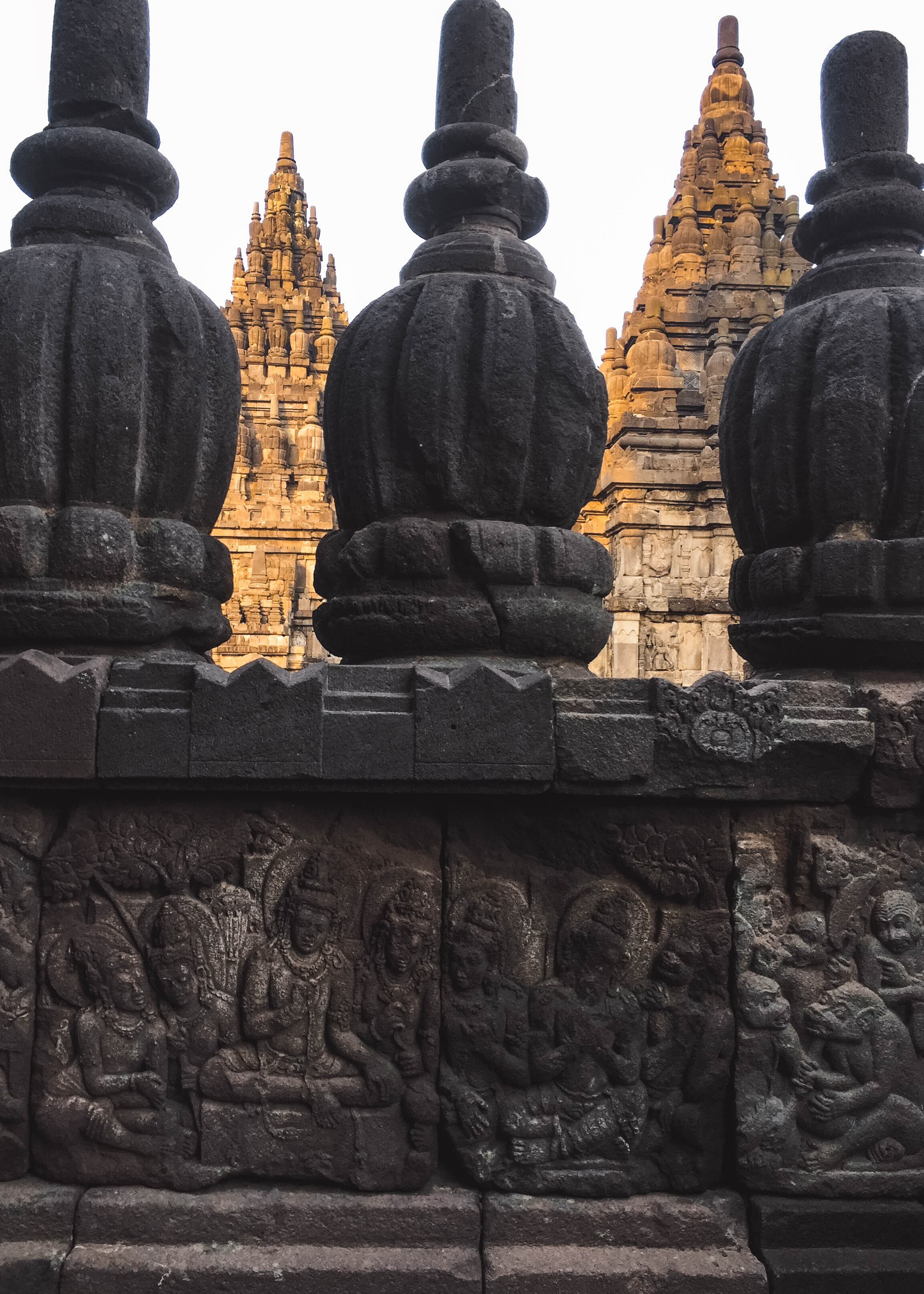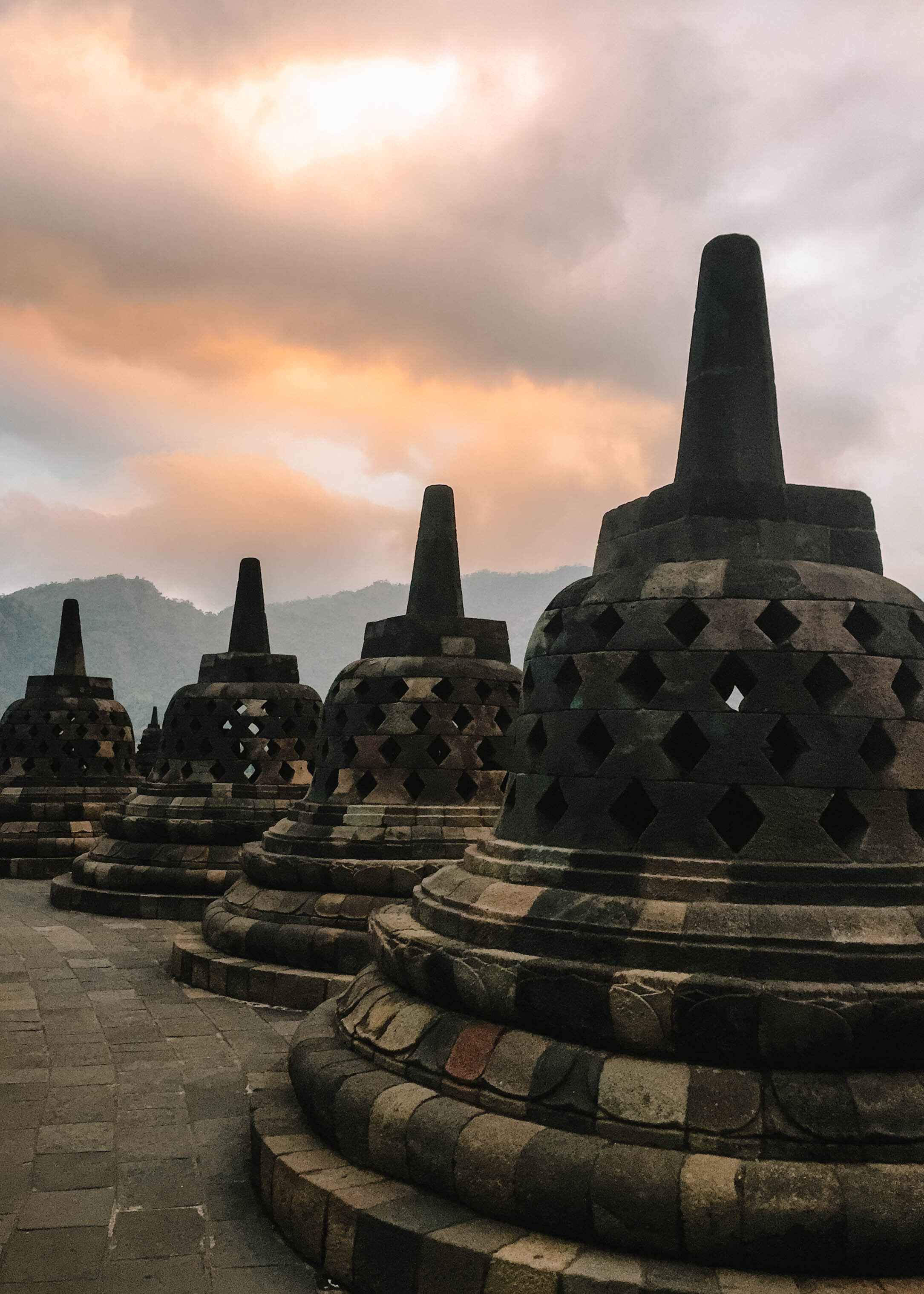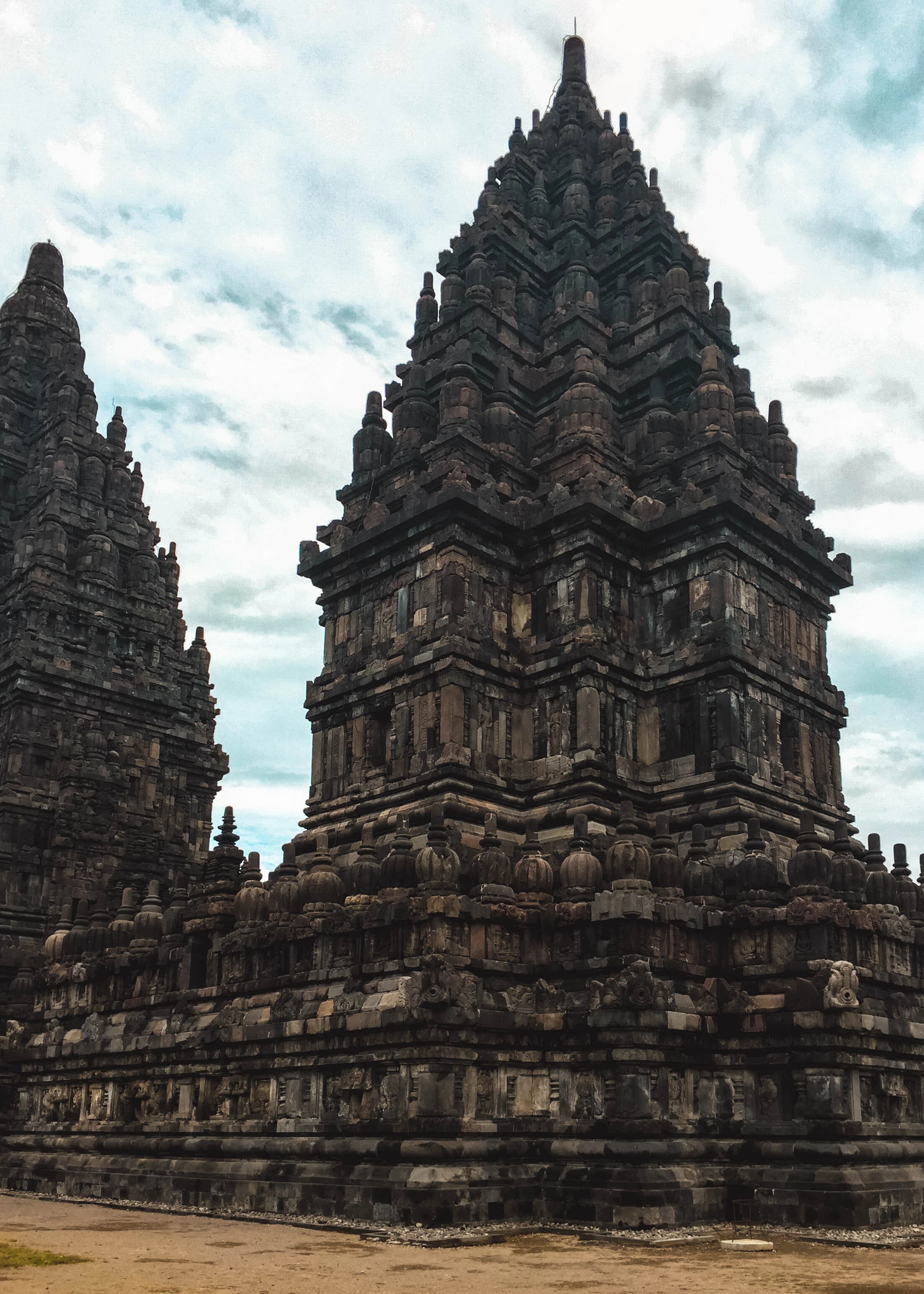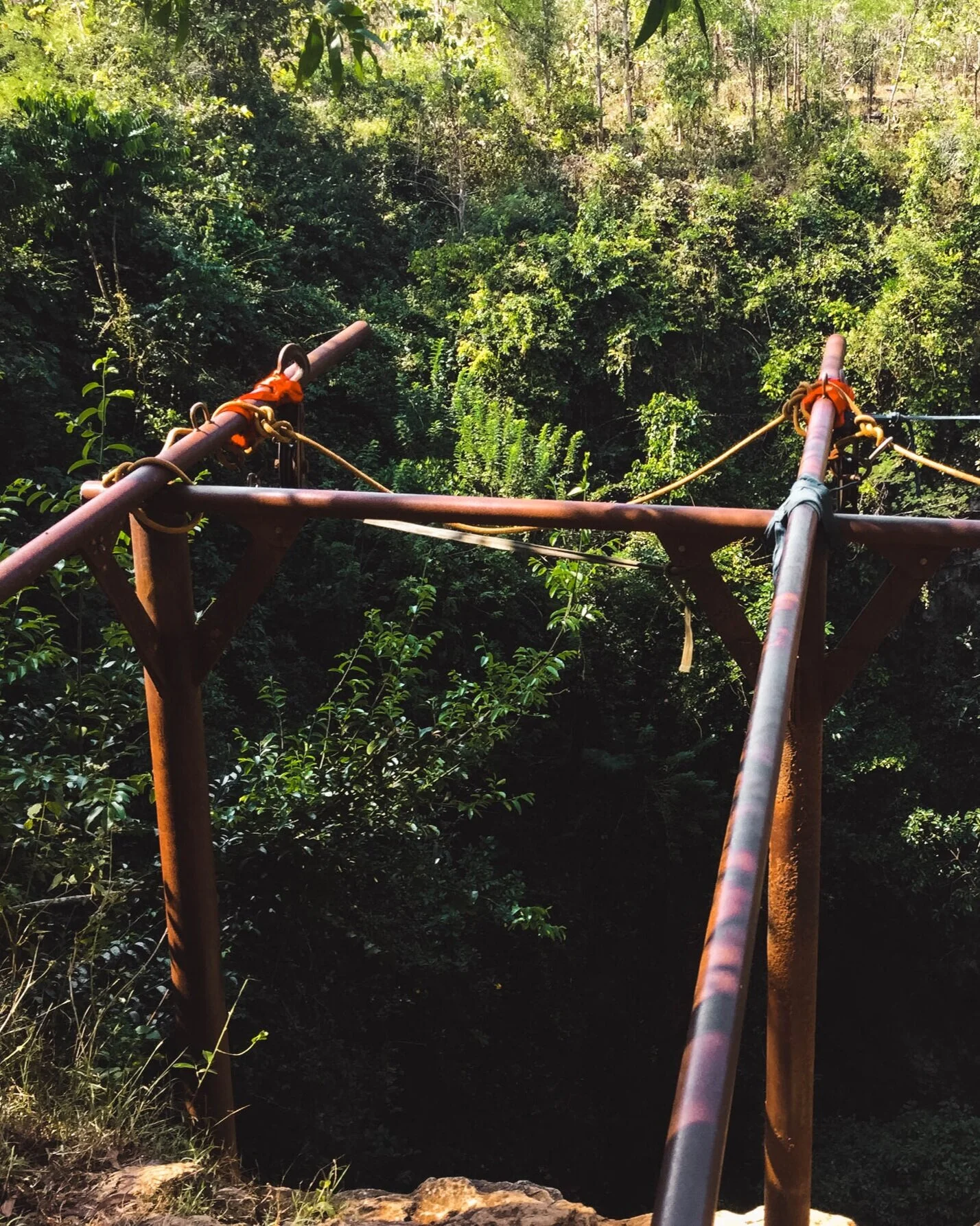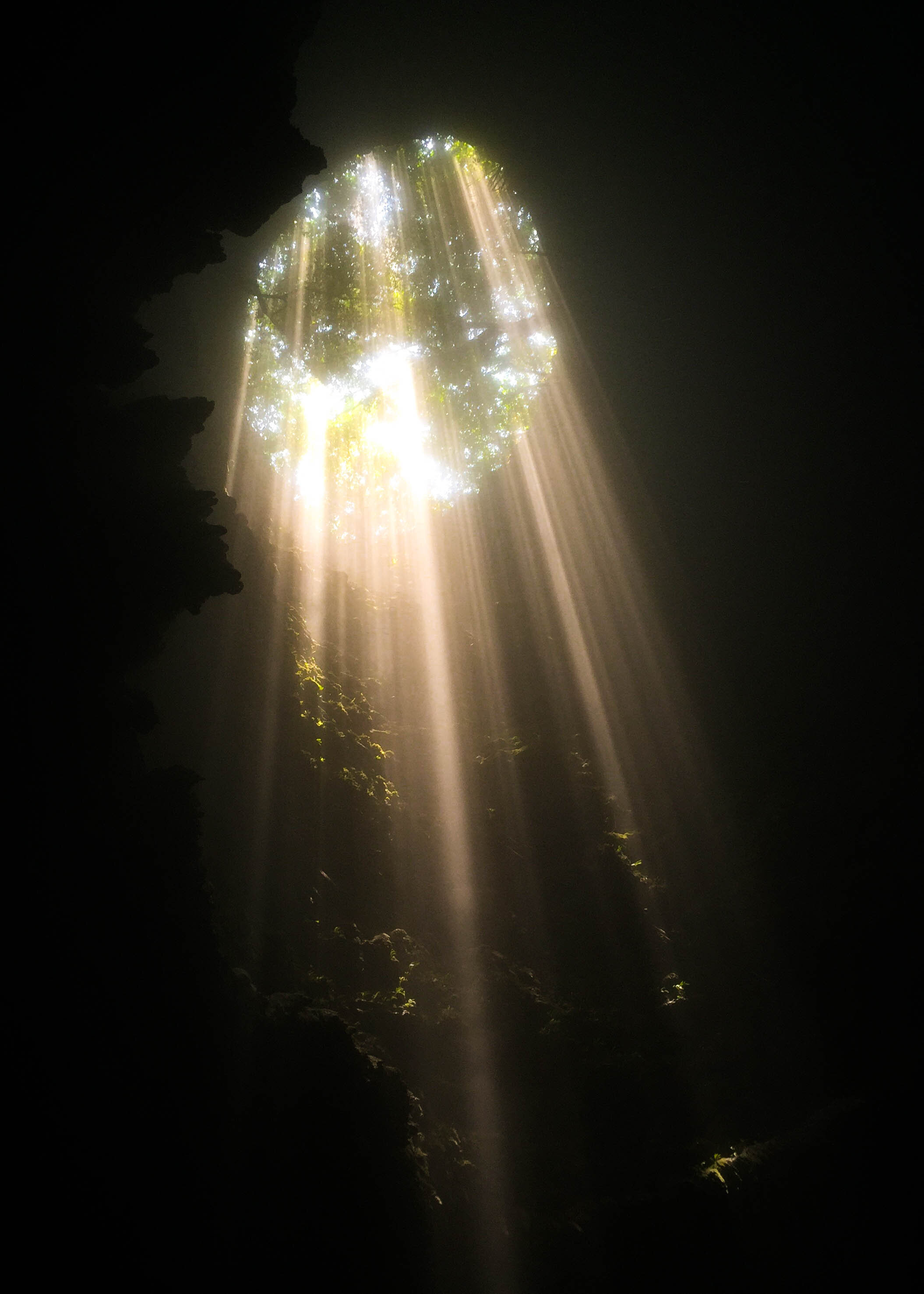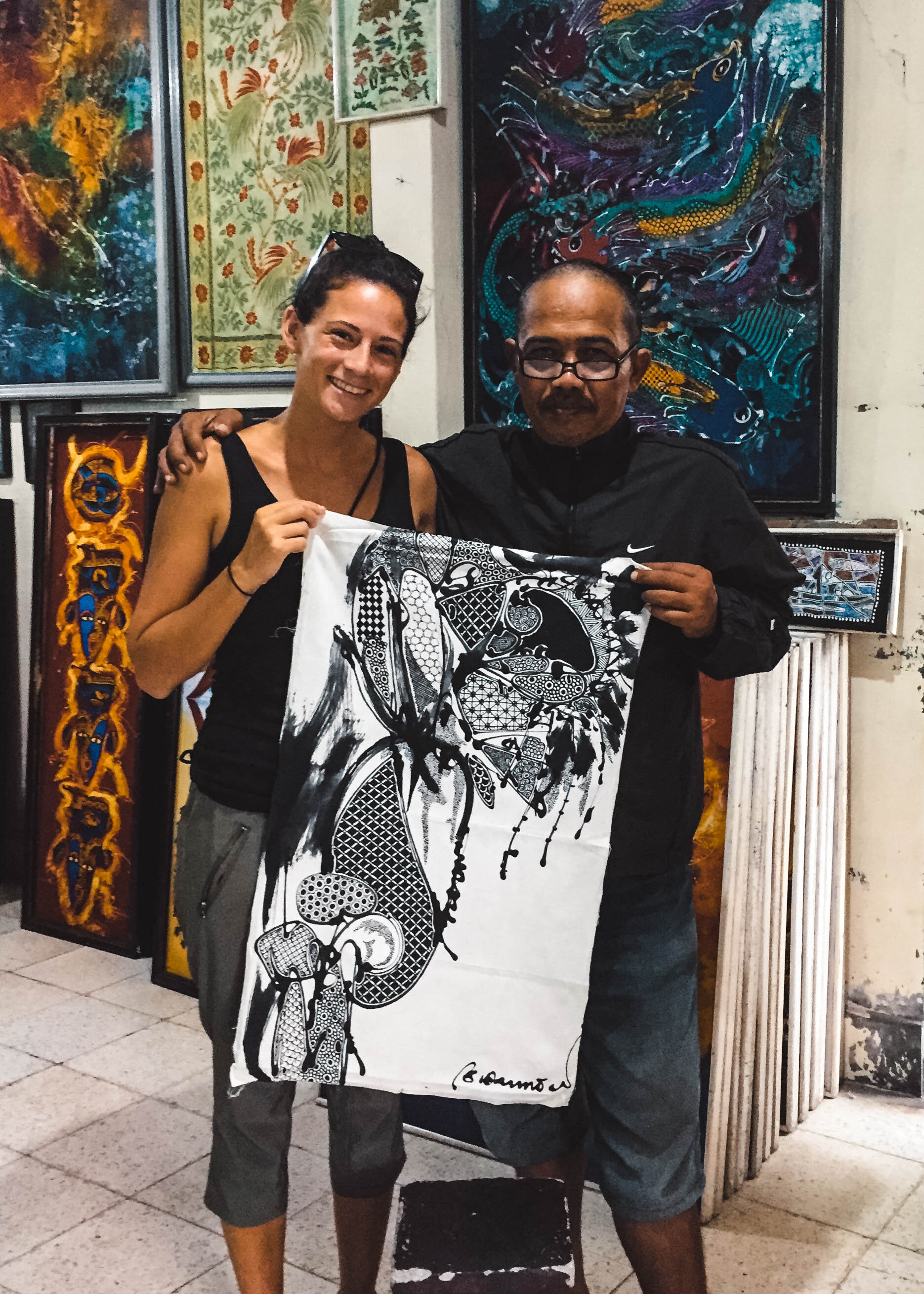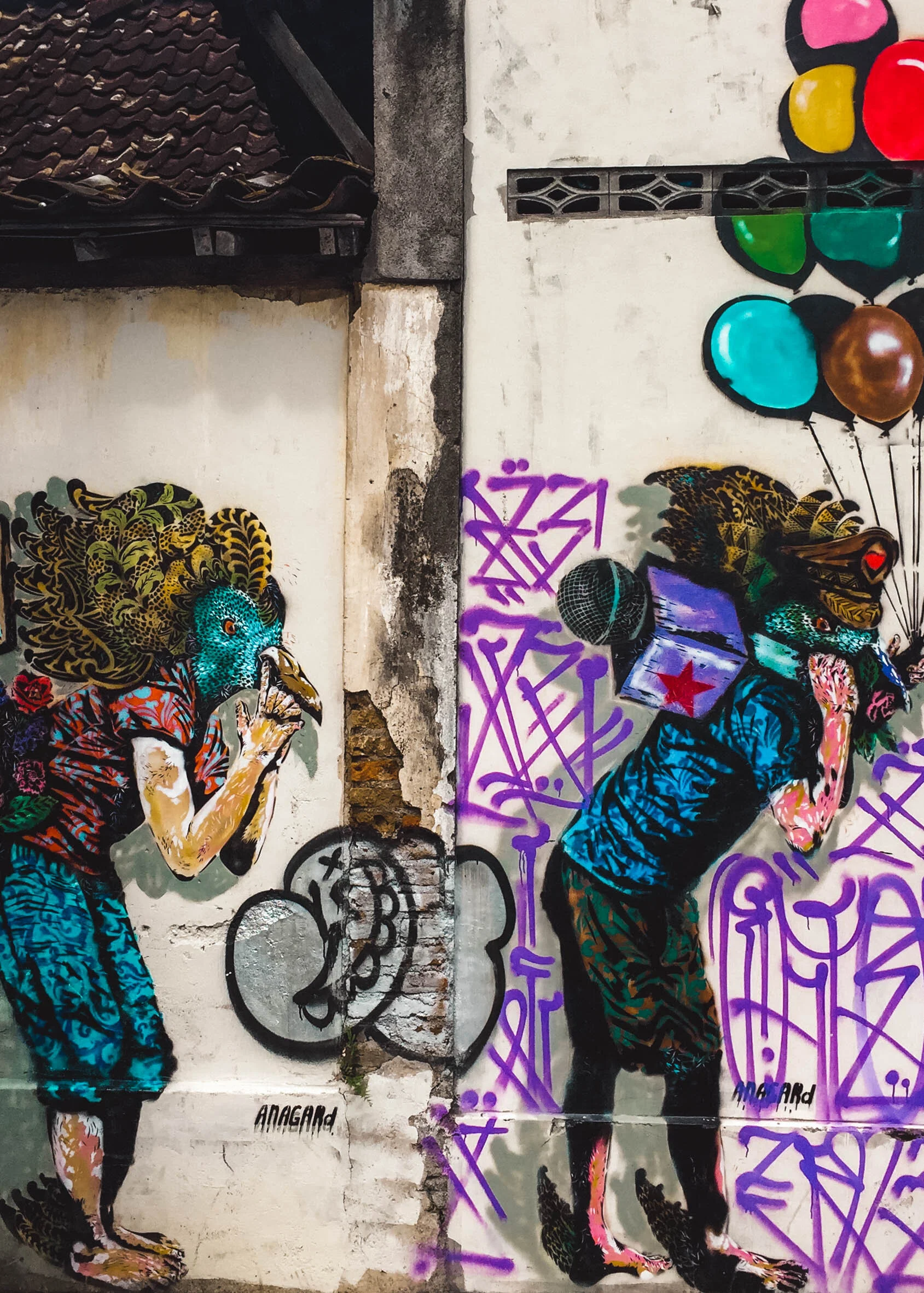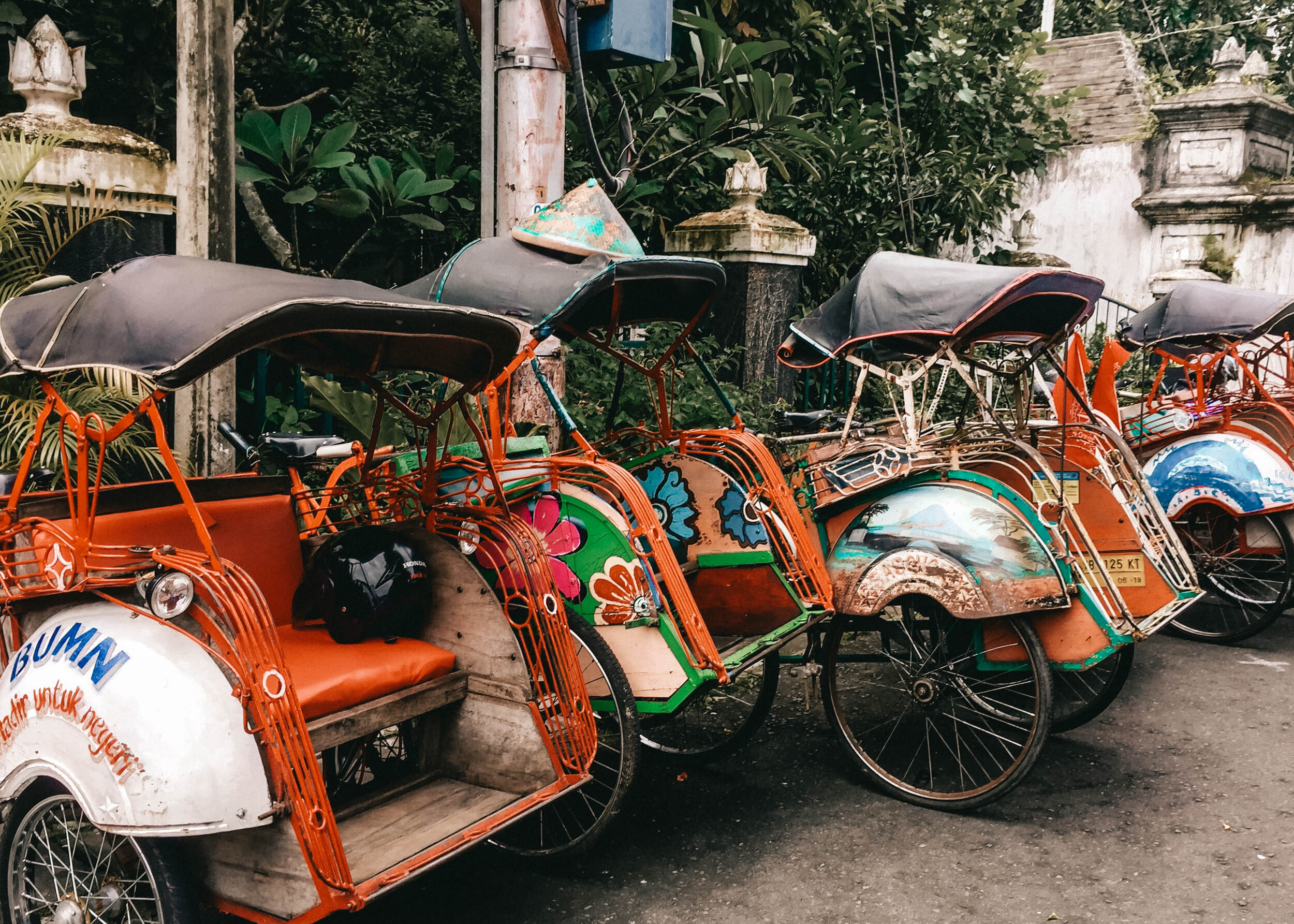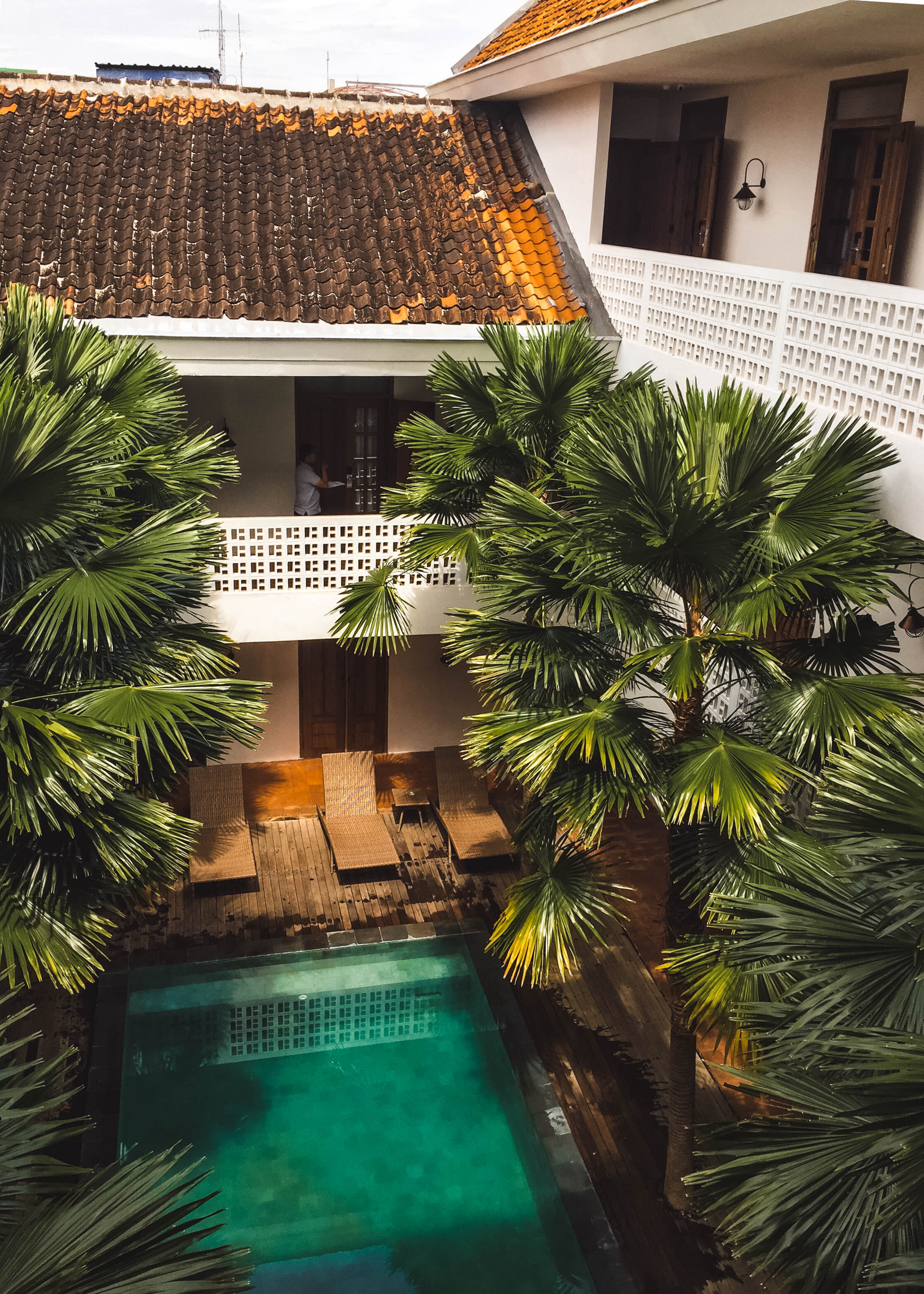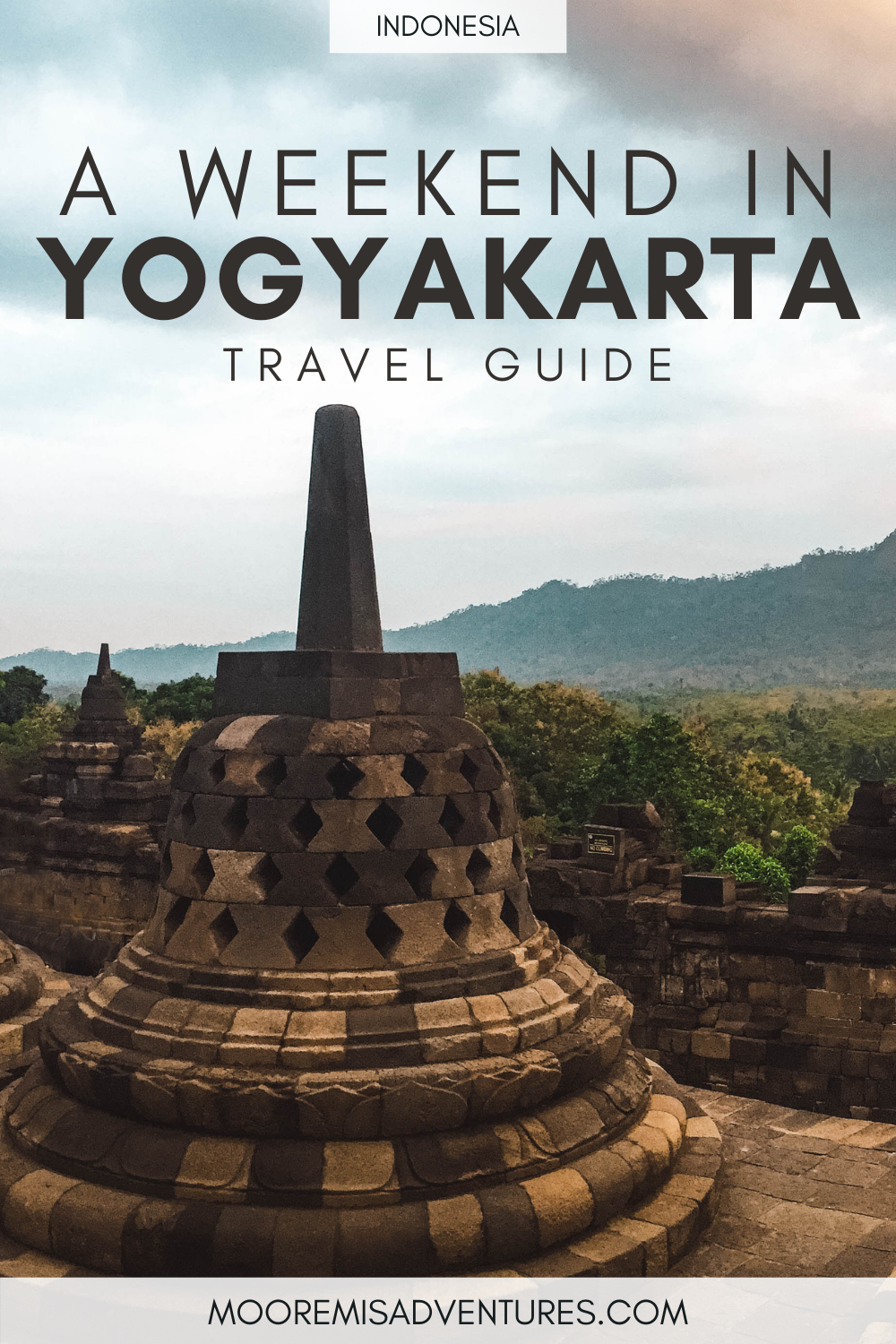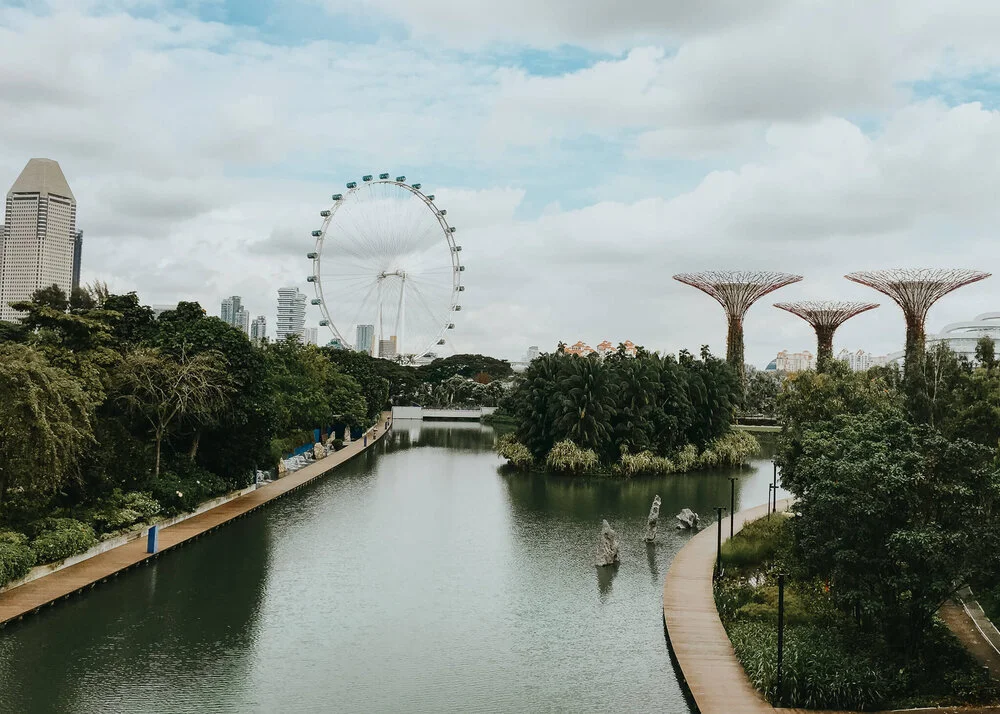A Weekend in Yogyakarta
Yogyakarta is often touted as the best place to visit on Indonesia’s main island. Eager to find out if the hype is true, I made my way to Central Java, where Yogyakarta acts as an anchor point for the island. There I was welcomed to a culturally potent, artistically rich and vibrant city.
Jogja, as it’s better known by (it’s short for Jogjakarta, which is how you actually pronounce “Yogyakarta”), effortlessly strikes a balance in nearly every way. Historical temples blend into the city’s bustling streets, which come alive at night with lively music coming flowing from bars and street corners. There is also a good mixture of tourists and locals; not too many tourists to feel overcrowded, but just enough to make you feel like you haven’t abandoned civilization. If it so strikes your fancy, you can sit in a cafe for fresh juice and eggs slathered in hollandaise sauce while a group of locals beside you indulge in nasi goreng, a local dish. Perhaps its best balancing act is in its ease to reach but that it still falls to the side of the main tourist track, making it an excellent spot to explore when visiting Java.
Personally, I enjoyed how Jogja supports vegetarianism, local artists and animal welfare (all the humanitarian things that make me swoon), but in a way that isn’t in your face. Most of the time you don’t even know that you’re eating organic chocolate or that the bag you just bought helped save the local sea turtles (I’m guilty on both counts). But that’s Jogja - confident, yet humble. It’s like they know they’re the best but refuse to let it go to its head.
So what exactly can you cram into a weekend in Yogyakarta, Java’s little gem? Continue on to find out!
What to See & Do
PRAMBANAN Temple
A trip to Jogja is not complete without a stop at Prambanan - it’d be like going to Paris and skipping the Eiffel Tower. Built in the 9th century, around year 856, this temple complex is dedicated to the triumvirate of Brahma, Vishnu and Shiva, the Hindu gods responsible for the creation, upkeep and destruction of the world (a narrative that seems to fit rather well for Prambanan considering its history).
Not long after being built, circa year 930, the temple was abandoned, likely due to natural disaster and power shifts between religious leaders, and soon fell into disrepair. A thousand years later, the Dutch “re-discovered” it and restored it to its former glory. To this day, it remains the largest Hindu temple in Indonesia and second largest in Southeast Asia (after Angkor Wat in Cambodia). Crowds flock to marvel at its intricate construction and the stories depicted in its carvings.
It is located about 10 miles northeast of Yogyakarta’s city center (which equates to an hour or so drive) and takes around two hours to explore. Spend the day wandering around the grounds, slipping into temples and maybe even finding a cat or two along the way.
TIP: Bring along a packed lunch or take-out to enjoy on one of the benches outside the temple. Lunch with an ancient view!
Borobudur Temple
Ironically, the world’s largest Buddhist temple is in a Muslim-dominate country, specifically on an island where nearly 90% of citizens practice Islam. It was built in the 9th century and fell into decline around the 14th century, which coincided with the beginnings of Islam in Indonesia, and was then consumed by the jungle.
Religion aside, Borobudur Temple is a feast for the eyes. It is essentially a massive stupa surrounded by terraces of stupas - 504 bell-shaped stupas to be exact. There are also over 2,500 relief panels that tell stories of daily life and buddhist beliefs.
It is most beautiful at sunrise or sunset, and while getting there early is best, you can expect crowds at any time of day. It’s especially popular for school field trips as they know Western tourists visit and students can practice English with them (and invariably take selfies). In fact, I ran into one of my Indonesian students from Jakarta while I spent the weekend in Jogja. If you have a few minutes, chat a bit with the students, it will likely make their day!
TIP: If you plan to visit both Borobudur and Prambanan Temples (and you should!), buy the combo ticket to save money.
Jomblong Cave
Despite involving the sketchiest pulley system I’ve ever trusted with my life, this is a fantastic experience. Located 1.5 hours from the city, it is a great day trip option for adrenaline seekers or those wanting to see some nature. On arrival, we geared up with mud boots, helmets and harnesses and prepared to be lowered 200 feet into a massive sinkhole. The cave isn’t large but it looks like a scene straight out of an Indian Jones movie, with a rock in the middle perfectly illuminated by striking light beams - the perfect place for the holy grail to sit.
After properly ooh-ing and ahh-ing at the light and exploring what little of the cave there was, we strapped back into the rappelling system and were lifted to higher ground. It was only after getting back up that we were able to see how we got up and down, which was equal parts comical and terrifying. We watched as twenty men from the village - most wearing flip-flops and some in no shoes at all - picked up the thick rope attached to metal pipes shoved into the cliffside, threw it over their shoulder and, when a man gave the go ahead, all ran as fast as they could away from the sinkhole, thereby pulling up people in the harness. Like I said, terrifying in practice, comical in hindsight.
TAMAN SARI WATER CASTLE
This marvelously dreamy place was built and used in the 18th century as a bathing and meditation complex for the Royal family. Today, it is slightly decrepit from previous military invasions and earthquakes but I find that it oddly adds to its charm. With an entrance fee of just over $1 USD, it is a lovely place to explore. Fresh coconuts outside the entrance also help on a hot day.
RATU BOKO TEMPLE
This is allegedly a great sunset spot but in the two times I’ve visited at sunset, I’ve yet to see the appeal. My first time visiting was on a rainy day with only five minutes to explore before it closed and a security guard was keen on seeing us out. Hoping to buy a few extra minutes, I kept telling him in Indonesian that he was such a handsome man, which worked a little bit (Indonesians love a good ego stroke), but in the end we left with terrible pictures and only sweet memories (fine by me). Beers were had afterward which helped ease the failure of our mission.
TIP: This temple can be anticlimactic after seeing Borobudur and Prambanan. If you plan to visit, I recommend going here first to level out expectations.
PALACE OF YOGYAKARTA
The palace, which in my opinion lacks a sense of palatialness, is the seat for the Sultan first and a museum second. I did not plan visiting, but sometimes you don’t have it in you to argue with your persistent trishaw driver so you give in and say, “fine, take me wherever, Mr. Ato.” And my tiny bicycle taxi driver, Mr. Ato, did just that.
Around the palace there are several small workshops that highlight Jogja’s signature crafts. A local lady insisted on personally shuffling me from art shop to art shop, and seeing as I didn’t have it in me to argue with either, I acquiesced. Her impromptu tour included seeing the handmade process of making batiks (traditional fabrics) and how their treasured theater puppets are made. She even patiently waited while I pet every cat I came into contact with, which equated to about 4 or 5 pit stops. Experiences like this serve as reminders that oftentimes people are just as important as places.
With the artist of the batik I brought home and framed
Malioboro Street
Malioboro, Yogyakarta’s main street, is consistently alive with action. Serving as the unofficial hub of tourism, it is filled with food stalls and rickshaw drivers eager to whisk you away. It is perhaps most popular for its shopping and with both sides of the street lined by shops teeming with local art and trinkets, I can see why. If you like the hustle and bustle of Asian cities, Malioboro will be your jam. If chaos isn’t your cup of tea, perhaps do a quick walk through or avoid it altogether.
STREET ART
Murals are a great creative outlet to demonstrate individuality and I can’t get enough of it, especially in Indonesia where it sometimes feels like people are mass-produced little clones that all like the same things. Seriously, if I had $1 for every Indonesian that said their favorite animal was a cat, I could easily finance my travels for the rest of my life and then some, but I digress.
Contemporary graffiti is sprinkled throughout the city, however, I stumbled on quite a bit after enjoying breakfast at ViaVia Jogja, located in the trendy and hip Prawirotaman neighborhood in the southern part of the city. From there, I wandered through alleys and streets to discover colorful hidden gems.
Logistics
So now you are ready to plan your trip to Jogja, or maybe you are already there. In any case, here are the nitty-gritty details to help you organize and plan your adventure.
Getting there
Flying | With its domestic and international airports, flying is the quick and easy option. Several daily flights leave from popular Indo cities (from Jakarta, it is a hair over an hour to reach Jogja) and there are several flights a week from nearby countries (from Kuala Lumpur, Malaysia, it is just under three hours).
Drive or Bus | If you’re already on the island, driving or taking a bus is possible but it takes awhile and therefore is not recommended. For example, a bus from Jakarta would take around 14 hours, which in Indonesia can really mean 20+ hours.
Train | There are trains that connect to Jogja, most being around 8-10 hours. For the price of a ticket, flying is far more enticing.
Getting Around
The city center is essentially a square split into northern, central and southern areas. Getting between sights is best done by renting your own motorbike, hiring a becak (rickshaw) driver for the day or by using an app like Grab or Go-Jek (which are similar to Uber, but typically on a motorbike).
Where to Stay
Adhistana | A small boutique hotel (pictured below) with crisp, clean decor that is budget-friendly. I contemplated never leaving. ($35 USD/night)
Wanderloft Hostel Jogja | A cozy and well-decorated hostel in a central location featuring cheap private rooms and even cheaper pod dorms beds. (Private: $20 USD/night, dorm pod: $9/USD)
Rumah Budi Susanto Villas | Why not splurge on a serene garden escape within the city by staying in a beautiful 2-bedroom villa? ($90 USD/night)
Eats & Drinks
ViaVia Jogja | A cute cafe that also takes on cultural, social and ecological community projects. Coffee with a side of humanitarianism? I’ll take it!
Roaster & Bear | A great place to unwind between sights and fuel up for more exploration. Bonus points for serving pumpkin soup.
Wanderlust Coffee Division | A delightful minimalist coffeeshop with fun artwork and a small menu of food. (Stop at The Lucky Boomerang Bookshop next door, too!)
TapHouse Beer Garden | Self explanatory in its offerings, this bar is popular with both tourists and locals alike.
For a taste of local cuisine, stop at a warung, a small family-owned food stall or shop. Don’t be afraid of the Indonesian language, whatever you get will likely be delicious! When in doubt, order nasi goreng (fried rice), sate ayam (chicken kebabs), bakso (meatballs) or anything with tempeh (fermented soybeans) or gudeg (braised jackfruit).
Pancakes at Wanderlust Coffee Division
Last Minute Tips
01. The word “candi” (pronounced cha-ndi) translates to “temple,” so you will see this word a lot when exploring Jogja. So no need to plan a visit to both Borobudor Temple and Candi Borobudur, as they’re the same thing.
02. Along the lines of pronunciations, Yogyakarta is said as “Jogja-karta” and is often just referred to as “Jogja.” No clue why, it is what it is.
03. To see the gist of Jogja, 2-3 days suffice. To experience it in more depth and take day trips (of which there are plenty!), a week is ideal.


